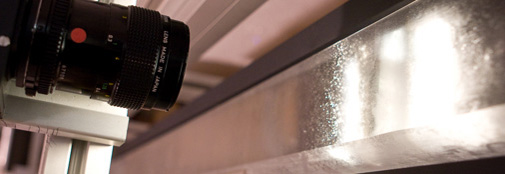A beautiful sunny day

Lizzie sawing the ice cores into 55 cm sections.
The drilling, the CFA, the science and the logistic work just run in routine. In the science trench we have passed the onset of the Bølling Allerød period at a depth of 1489.5 m. We are now processing cold Last Glacial Maximum ice with beautiful cloudy bands. Lizzie works with her favourite saw – the saw blade is one on the troublemakers and it often jumps of.
What we have done today:
- Drilling with the NEEM long drill: 25.49 m. Drillers depth: 1537.03 m.
- Logging 29.09 m of core. Logging depth 1550.31 m.
- CFA analysis: The remaining GRIP and NGRIP samples. In the evening drilling and sampling a 5 m hand augered core.
- Processing 14.85 m of core. Processing depth: 1499.30 m (bag 2726).
- 500 m from camp the morning was used to continue the pit study by Li Chuanjin and the pit study and hand coring by James Zheng. Position: 77°25.721'N, 51°06.594'W.
- Building floor for the sauna in the storage garage (garage 3).
- Assembling shelves for storage in the carpenters garage.
Ad 1: Drillers report August 5, 2009:
“Comfortable and efficient drilling
today with some adjustments made to cutting pitch after installing new
cutters. A new set of cutters was installed after one cutter was found
broken in two pieces upon surfacing. It was a similar break to the cutter
that broke in May this season. Inclination has taken a really nice turn
down to 1.93 degrees.”
Ad 4: The science trench opened after lunch when the pit sampling program stopped. Part of the science team packed the pallet with spare US ice core boxes for storage over winter (24 ice core boxes with 2 packages of gel elements in each). The white buckets with ice cuttings from the drilling (for Canadian studies) have been moved to the surface for storage on the cargo line over winter.
Weather: Again sunny with high scattered clouds. Temperature between -15°C and – 5°C. Wind: 8-14 kn from S.
FL, Dorthe Dahl-Jensen

Cloudy bands are most visiable in the line scan instrument because a 3 cm slab of ice has been cut clean.
| ← Previous entry | Next entry → |

